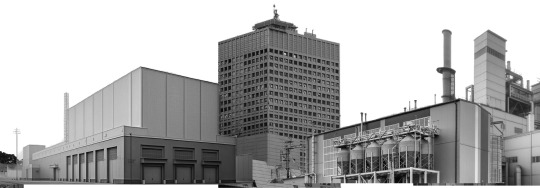Air Compressors account for up to 30% of the energy costs of manufacturing. Read the article to know how you can reduce it.
With India aiming to achieve net zero emissions by 2070, industries face increased pressure to operate sustainably. In addition, companies now have Key Performance Indicators (KPIs) that include sustainability targets. SEBI, India’s capital market regulatory body, has mandated sustainability reports for the top 1000 listed companies. Consequently, as the compliances around sustainability norms grow stricter, so has the requirement for industries to become energy efficient.
Energy efficiency is a crucial tool to reduce greenhouse gas emissions, promote sustainability, and combat climate change. It also helps lower energy consumption and associated costs.
However, the high upfront investment needed to implement energy efficiency measures is usually a concern for Industries.
In this scenario partnering with an Energy Services Company – ESCO – is highly recommended.
An ESCO, like Energeia, is a one-stop shop executing an energy efficiency project. This includes identifying, quantifying, financing, implementing, monitoring, and verifying energy-efficient solutions. The project will generate enough savings to cover the cost of the equipment and services provided by the ESCO. Furthermore, it will unlock cost savings for the facility. To read more about what an ESCO is, click here.
Air Compressors account for up to 30% of the energy costs of manufacturing. This can be reduced by implementing various Energy Conservation Methods (ECMs).
How is compressed air optimization done?
An Air Compressor System in which the demand is matched with the supply is considered to be the most energy-efficient. However, plants usually have varying demand patterns, pressure requirements, and complex piping systems, which drags the efficiency down.
The optimization process involves analyzing the energy consumption data of the compressed air system. This must be performed at a high frequency. Power consumption, flow, and pressure would need to be monitored at a very high frequency. At Energeia, we monitor this down to every second via our Energy Monitoring System (EMS).
After data analysis, areas of improvement for ECMs are identified. This can involve identifying and repairing leaks, optimizing compressed air pressure, and improving compressor room or Airnet design. It also includes retrofitting and replacing equipment.
These measures play a vital role to reduce the hidden costs of maintenance by up to 20% and overcome the unplanned downtime of compressors. ECMs help improve the life cycle cost of the compressor thereby improving the overall efficiency of the system.
What are the Energy Conservation Methods for Air Compressor Optimization?
To achieve an energy efficient Air Compressor System, one has to work on the demand and supply side.
Demand Side
Understanding the varying requirement of pressure and flow in different processes is important to make the entire system efficient. On the demand side, the following measures could be implemented:
i) Identifying and repairing leaks: A significant portion of the cost of an air compressor is unnecessary. Nearly one-third to one-fourth of industrial compressed air consumption is wasted due to leaks. This could be due to improper maintenance of valves, piping, and other components. During audits, we use leak detectors to identify the location of the leaks in a timely manner. These smart devices come with advanced sensor technology that can detect the smallest leaks. They also provide information on the leak size, the loss to the unit, and cost estimates for remedial action.
ii) Eliminating Artificial Demand: Artificial Demand is present in a lot of Industries, especially in facilities that have varying end pressure requirements. Supplying equipment air at the right pressure makes the overall system efficient.
iii) Improper Usage: Not all applications that require air require compressed air. Certain low-pressure applications like blowing can be done with the help of blowers, which have a much lower energy cost.
Supply Side
The Air Compressors and Air Treatment equipment themselves have to be efficient. On the supply side, the following could be the efficiency measures:
i) Using energy-efficient Air Compressors: Several OEMs have been manufacturing energy-efficient Air Compressors with specific power consumption as low as 0.15 for 6 bar applications. Replacing old Air Compressors with energy-efficient ones is an obvious solution.
ii) Reducing Pressure Drop across equipment: Equipment would need to be maintained properly in order to ensure that there is minimal pressure drop across them. This would enable the Air Compressors to run at pressures closer to the demand, lowering their energy consumption.
iii) Reduce unload power consumption: Screw Air Compressors generate no air while running unloaded. This drastically reduces the kW/CFM of individual Air Compressors. Air Compressors which are unloading frequently should be retrofitted with VFDs to save unload power consumption.
iv) Continuous Energy Monitoring: Air Demand continuously changes within facilities. Electronically monitoring power consumption, flow, and pressure continuously ensures that Air Compressor Plants are running optimally in all scenarios.
Energeia undertakes long-term ESCO contracts with their clients, helping them optimise their air compressor plant, without investing any capital.
We monitor and baseline the present Air Compressor Plant efficiency after which we identify, finance, and implement the ECMs to improve the plant’s efficiency. Energeia gets a share of the savings for a fixed tenure, whereas clients enjoy savings at 0 costs.
Reach out to us to learn more about E-Air and how Energeia can help make your Air Compressors Plants more efficient!












